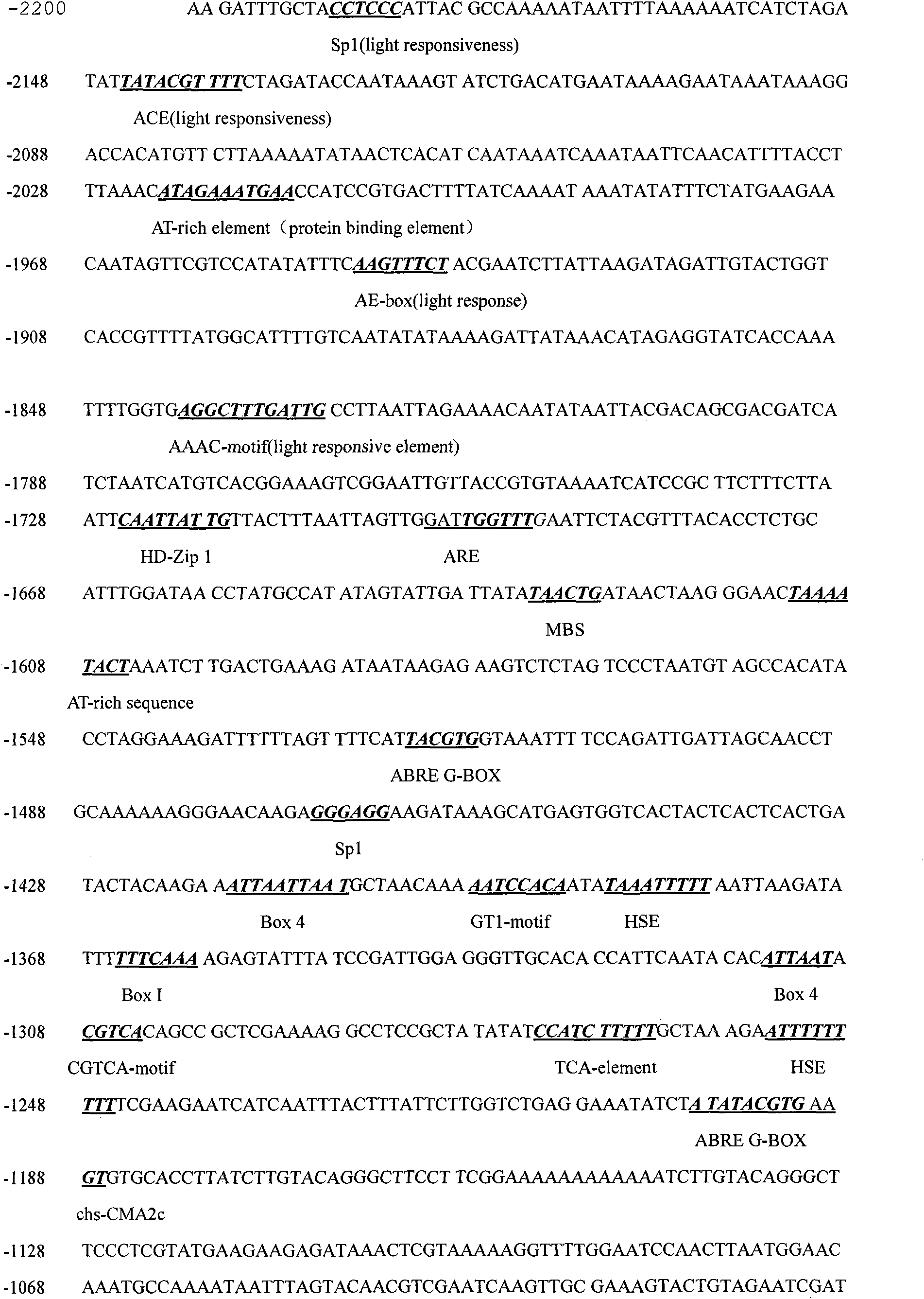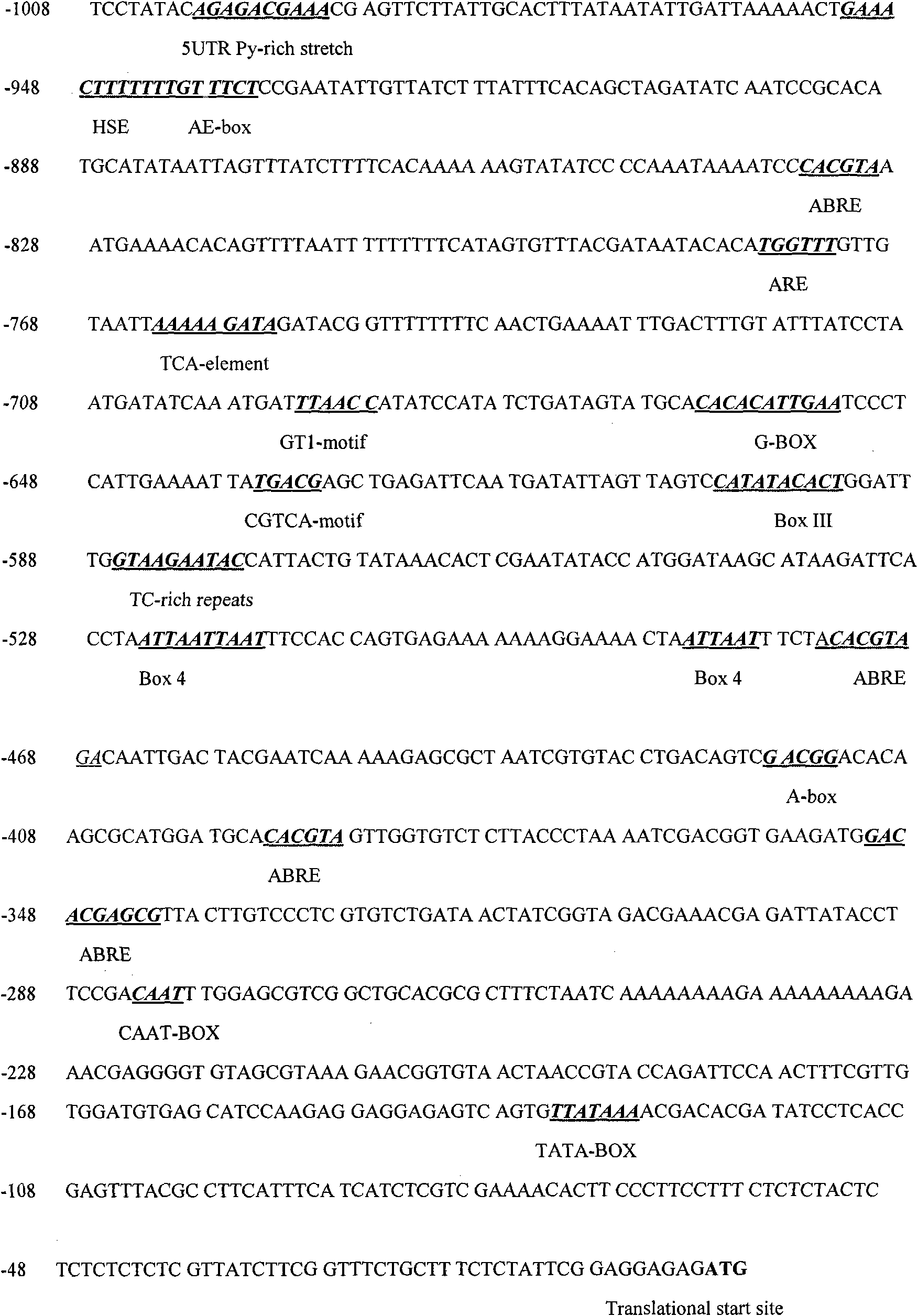Thellungiella V-pyrophosphatase gene (TsVPI) promoter sequence and application of deletion mutant thereof
A technology for deleting mutants and promoter sequences, which is applied in the direction of introducing foreign genetic material using vectors, recombinant DNA technology, etc., and can solve problems such as the lack of inducible promoters
- Summary
- Abstract
- Description
- Claims
- Application Information
AI Technical Summary
Problems solved by technology
Method used
Image
Examples
Embodiment 1
[0068] Example 1: Transducing the ZmPIS gene initiated by the TsVP1 promoter to create a drought-tolerant inbred line of maize and its application
[0069] 1) Construct the fusion gene of TsVP1 promoter and ZmPIS
[0070] The TsVP1 promoter was connected with the ZmPIS by a conventional gene recombination method, and recombined into the T-DNA region of the plant expression vector pCUA plasmid after sequencing verification. The pCUA plasmid was constructed in our laboratory and carries the plant selection marker gene als. Then use the freeze-thaw method to introduce into Agrobacterium LBA4404 or AGLO.
[0071] 2) The establishment of the receptor system is based on the corn backbone inbred lines used in my country's production, such as Zheng 58, Ye 478, Ye 515, etc., the inbred seeds are sterilized, and in vitro culture induces shoot tips to produce clustered buds. Genetic transformation was carried out using clustered shoots as recipients. The media used are:
[0072] Seed ...
Embodiment 2
[0086] Example 2: Transducing the T5-ZmPIS gene to create excellent drought-resistant breeding materials for wheat
[0087] 1) Construct the fusion gene of T5 promoter and ZmPIS
[0088] The T5 promoter was connected with the ZmPIS by conventional gene recombination method, and recombined into the T-DNA region of the plant expression vector pCUA-bar plasmid after sequencing verification. The pCUA-bar plasmid was constructed in our laboratory, carrying the plant selection marker gene bar, and then introduced into Agrobacterium LBA4404 or AGLO by freeze-thaw method.
[0089] 2) Obtained sterile wheat seedlings
[0090] Seeds of fine varieties of wheat are soaked with 70% ethanol for 1-3 minutes, then soaked with 0.1% mercury chloride for 8-12 minutes, and then washed with sterile water for 3-5 times. Shake the seeds constantly during sterilization to ensure complete surface sterilization. After sterilization, the seeds are placed in a sterile Erlenmeyer flask to germinate, an...
Embodiment 3
[0103] Example 3, Transducing the betA gene initiated by the T5 promoter to create excellent stress-resistant cotton breeding materials
[0104] 1) Fusion gene and plasmid construction of T5 promoter and betA gene and Agrobacterium culture
[0105] The T5 promoter is connected with the betA gene by a conventional gene recombination method, and recombined into the T-DNA region of the plant expression vector pCUA plasmid after sequencing verification. The pCUA plasmid carrying the plant selection marker gene als was then introduced into Agrobacterium LBA4404 or AGLO by freeze-thaw method. Agrobacterium cultivation and activation were the same as in Example 2.
[0106] 2) Obtain sterile cotton seedlings
[0107] Take the seeds of cotton inbred lines or fine varieties, use concentrated sulfuric acid to remove the surface fluff, soak in 70% ethanol for 1 minute, then soak in 0.1% mercuric chloride for 10-12 minutes, and then wash 3-5 times with sterile water . Shake the seeds c...
PUM
 Login to View More
Login to View More Abstract
Description
Claims
Application Information
 Login to View More
Login to View More - R&D
- Intellectual Property
- Life Sciences
- Materials
- Tech Scout
- Unparalleled Data Quality
- Higher Quality Content
- 60% Fewer Hallucinations
Browse by: Latest US Patents, China's latest patents, Technical Efficacy Thesaurus, Application Domain, Technology Topic, Popular Technical Reports.
© 2025 PatSnap. All rights reserved.Legal|Privacy policy|Modern Slavery Act Transparency Statement|Sitemap|About US| Contact US: help@patsnap.com



